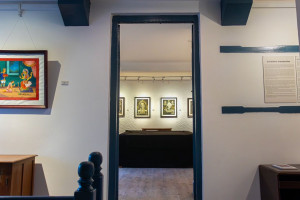Arts
Nepal’s art residencies are drawing the world together
These residencies are turning Nepal’s galleries into crossroads for creativity—where artists from around the world immerse themselves in local heritage, and exchange ideas with Nepali peers.
Reeva Khanal
Galleries and studios across Kathmandu are hosting international artist residencies, offering creators from around the world the time and space to immerse themselves in their practice, collaborate, and engage with Nepal’s culture and tradition. In a world often divided by politics and global challenges, these residencies become more than retreats—they are acts of cultural and art diplomacy, forging connections that transcend borders and inviting the world to see Nepal not only as a destination, but as a living, breathing story told through art.
Rubab Batool and Konain Niaz, originally from Pakistan and now based in Moscow and Rochester respectively, have spent the past month in Kathmandu developing works that reflect on cultural identity, migration, and personal memory. Their project, ‘Connection, Memory & Borders’, merges digital media, speculative fiction, and mapping—blending deeply personal archives with global commentary.
“This residency wouldn’t have been possible if it hadn’t been Kathmandu,” says Batool. “It’s more about the cross-cultural experience. The city, the people, the openness—it allowed us to create in a way that felt natural.” One of their works, a short film, draws from personal collections of photographs and videos, creating what she describes as “very raw, very natural pieces of us coming together.” Alongside it is a digital curation project exploring how art can live and grow online. “It’s an interactive piece where a global audience can comment live, and the work evolves as those voices are added. You become part of it—it keeps expanding.”
For Niaz, the connection to Nepal runs deeper. “This is my third time here,” he notes. “The first visit was for a friend’s exhibit, and I fell in love with Kathmandu instantly. I knew I wanted to come back for something more.” His second trip, alongside Rubab, led to meeting Kailash K Shrestha, founder of Artudio, whose vision for South Asian art resonated with theirs. “We weren’t here as tourists—we wanted to work, to collaborate, to be part of this art scene. Seeing international and Nepali artists working together was fascinating.”
Their reflections also touch on the realities of borders and mobility in today’s world. “As artists based in Russia and the United States, we know how complex and restrictive the immigration system can be,” Batool explains. “From some countries, getting a visa to others is nearly impossible. Nepal offered a rare openness—visa on arrival for both Americans and Russians—and it became this concrete place where we could meet, create, and cross borders in more than just the physical sense.”
Kathmandu, they agree, “checked all the boxes.” Its multicultural vibrancy and rooted love for art created the perfect backdrop. “Here, art isn’t just appreciated—it’s woven into the culture. It’s celebrated,” says Batool.
The centrepiece of their exhibit is a striking map-like installation. From the outside, it resembles a world map made up of postcards and news clippings—global headlines on war, conflict, and events shaping public opinion and personal lives. Step inside the work, and you find fragments of the artists’ memories—photographs, moments, and emotions. “It’s about showing how the external world seeps into our internal world,” says Niaz. “A country’s situation can affect the individual. Our piece maps the world without borders—because inside, we’re all connected.”
But their work goes beyond the physical gallery space. For Niaz, it is also about how global events shape our ability to connect—online as much as in person. “Life pushes you into certain situations, and you want to express them somehow. Talking about them isn’t always enough. The sanctions, the bans—they all affect how we stay in touch. Platforms that work in the US don’t work in Russia, and vice versa. Instagram used to be a huge part of how we shared things—sending reels, memes, little bits of media—but suddenly we couldn’t.”
As a data scientist with an interest in language and migration, Niaz sees a direct link between his professional skills and their collaborative project. “Normally people think of data science as AI, but this is also data—personal memories as a dataset. One of our key works is an interactive world map, both physical and digital. It’s an evolving archive where people can ‘pin’ their memories, add comments, and share stories from anywhere in the world. Visitors to the exhibition can add theirs too, so the piece keeps growing. You open a pin, and inside is a fragment of our memory—a photograph, a video—and then you can add your own. It’s about reconstructing the map of the world without borders, through shared personal histories.”
This idea—that geopolitical realities seep into personal lives without necessarily making the work political—is central to their vision. “People often think if you talk about geopolitics in art, it becomes political,” says Batool. “We don’t see it that way. We’re showing how art connects people. Language has limits—not everything you feel can be expressed in words. But visuals, images, and media cross those barriers. In today’s digital age, visual connection is as powerful as physical connection. That’s why we wanted to bridge the gap in contemporary art by bringing all these interdisciplinary elements together and experimenting with them.”
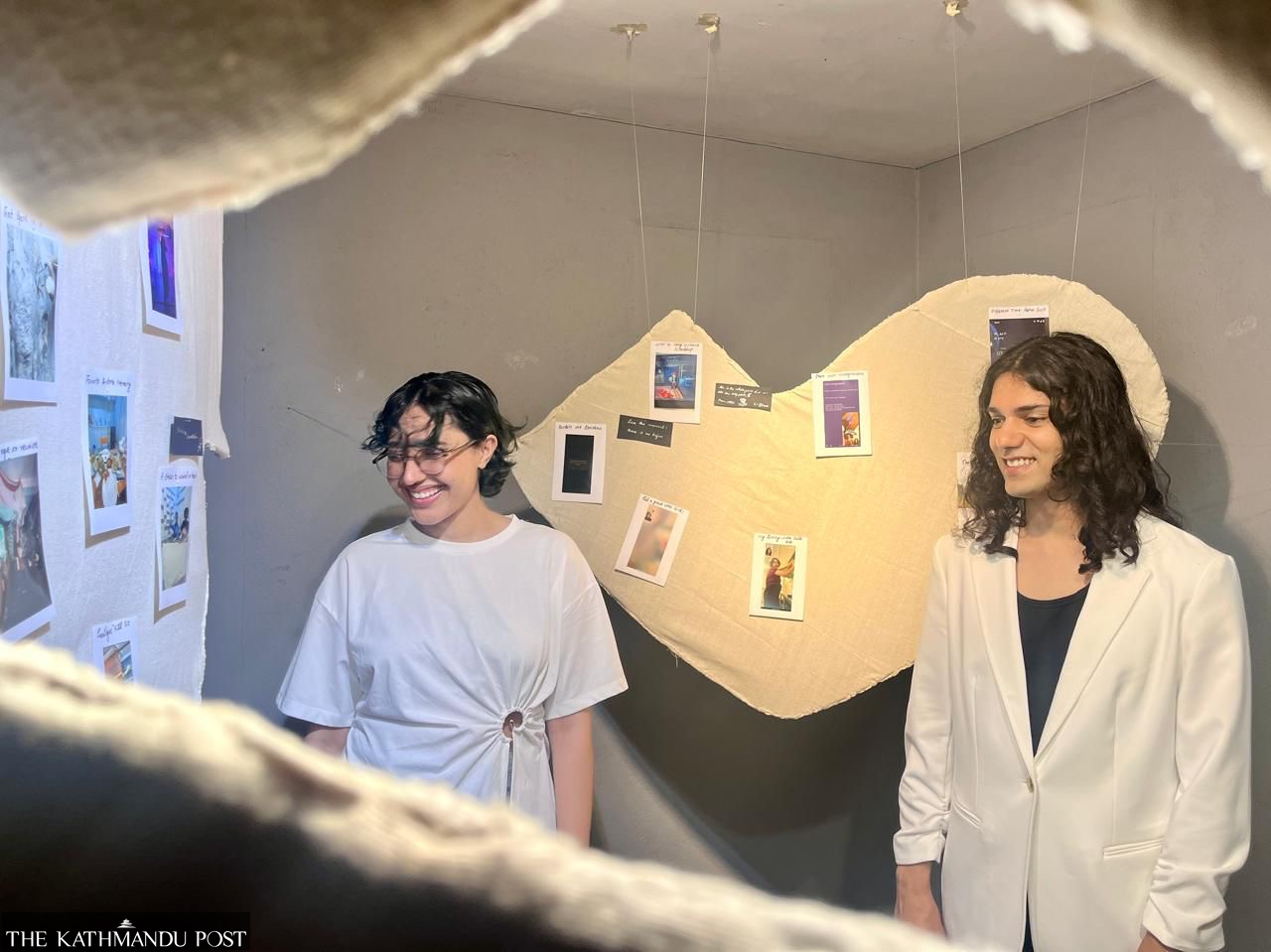
American artist Peter Makela’s relationship with Nepal spans over a decade. “The journey has been 11 years,” he says. “I’ve been coming semi-regularly, and I love Kathmandu. Every time I come, I appreciate the vastness and beauty of its many layers. There’s always something to explore, always something to learn. It’s infinite.”
For the July 2025 edition of the AIR_MCUBE International Artists Residency, Gallery Mcube hosted Makela for a month-long stay in Patan—a period he describes as creatively rich and personally meaningful. “It’s a privilege to make art in Patan, to live here for a month. Manish Lal Shrestha, the founder and director of Gallery Mcube has been incredibly kind and supportive. The studio is great, but honestly, just walking through Patan’s gullies, alleys every day was amazing.”
Makela’s daily routine was nothing short of a personal pilgrimage. “Every day, I’d visit stupas, make offerings, and record them on my map. Even after a month, I feel I’ve only scratched the surface.” While his residency was a solo one this year, he still found value in connecting with local artists and exchanging ideas with Gallery Mcube’s team. “Sometimes there are multiple visiting artists, but this time it was just me. That meant more solo making, but also more time to explore and reflect.”
The pieces created during his residency draw from his personal connections to specific sites in Patan, such as Chandra Binayak. “I’ve visited all the Binayaks, but some I feel more connected to—Chandrabinayak is one of them. “My development in art isn’t a straight line—it’s more like a spiral. During my 2022 Fulbright in Nepal, I worked on a sky series. The sky has no boundaries, no centre, just luminous spaciousness. Through five colours, you can paint that. Here, I’ve combined that with imagery of the Ganapatis and stupas, filtered through my own experience.”
For Makela, international residencies are an essential form of cultural exchange. “All of the artists I’ve met here have been kind, open, and deeply dedicated to their craft. When I taught colour theory at Kathmandu University during my Fulbright, I was impressed by the students—not just their skill, but how they related to each other, almost like a family. That’s very different from the competitive atmosphere in some American art schools.”
He believes Nepal’s strength lies in artists who “honour cultural and spiritual heritage and breathe life into it through their own unique personal experience and visual language.” His connection to the country, and to Patan in particular, is one he hopes will last a lifetime. “I’ve been lucky to come very often, and I’d like to return every year for the rest of my life. I’m just very thankful to be here.”
For a country so deeply rooted in its artistic and cultural heritage, initiatives like international artist residencies serve as living bridges—spaces where stories, techniques, and perspectives flow freely across borders. They shape how the world perceives us, not through speeches or statistics, but through shared experiences, creativity, and dialogue. When we preserve and protect our heritage, we do more than safeguard history—we invite the world to witness it, to participate in it, and to carry it forward.
More galleries, studios, and cultural institutions must be encouraged—supported by authorities and communities alike—to host and promote such programmes.




 13.12°C Kathmandu
13.12°C Kathmandu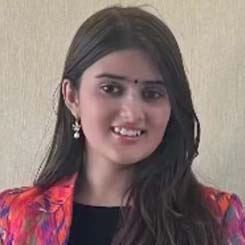
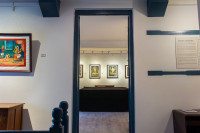
%20(1).jpg&w=200&height=120)
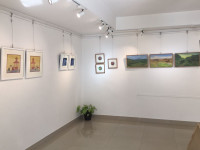
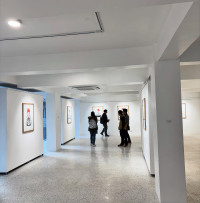

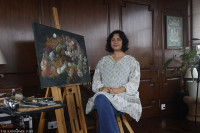
%20(1).jpg&w=300&height=200)
